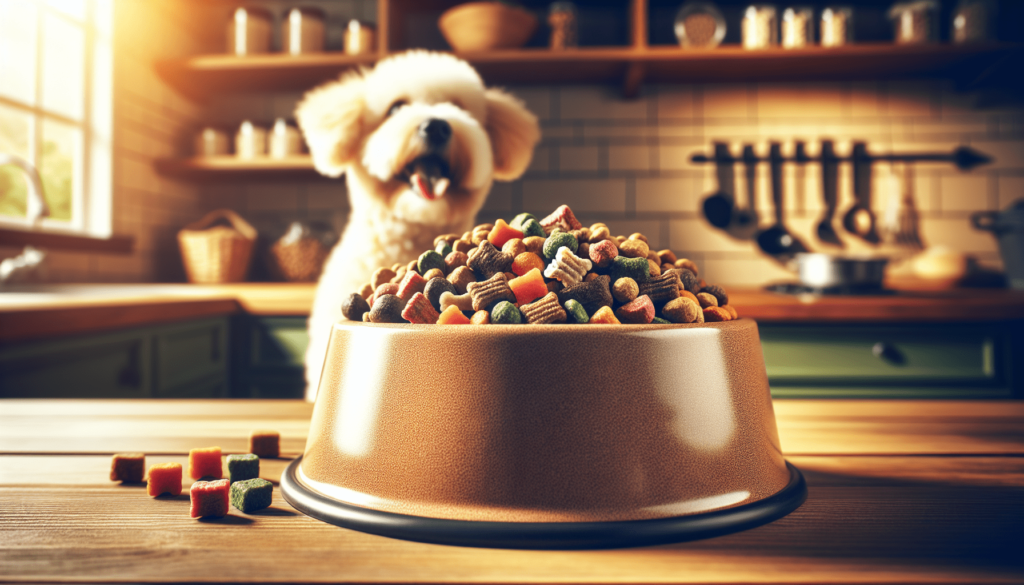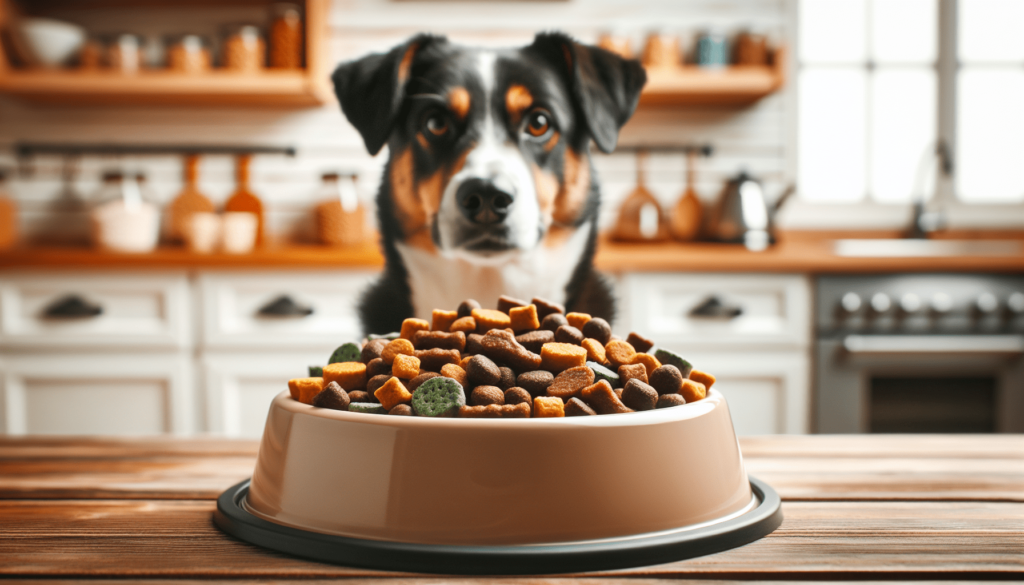Have you ever found yourself standing in the pet food aisle, overwhelmed by the sheer number of options and wondering just how much you should feed your beloved dog daily? If so, you’re certainly not alone. It’s a question that seemingly pops up as soon as you bring a furry friend into your life, and yet it’s one that so many struggle to answer definitively.

The Importance of Proper Feeding
Feeding your dog the right amount of food is crucial not only for their physical health but also for their emotional well-being. Just like us, dogs thrive when they have a consistent routine, and knowing that they’re getting what they need nutritionally plays a significant role in that.
Understanding Your Dog’s Needs
Breed Size Matters
Before diving into the specifics, it’s essential to recognize that not all dogs are the same. Different breeds and sizes have distinctly different nutritional needs. For example, a large breed like a Labrador Retriever will have different caloric requirements than a small breed like a Chihuahua. A simple guideline is:
| Dog Size | Daily Caloric Needs (Approx.) |
|---|---|
| Small | 200 to 500 calories |
| Medium | 500 to 800 calories |
| Large | 800 to 1,500+ calories |
Age and Activity Level
A young, energetic puppy will certainly require more calories than a senior dog who enjoys leisurely walks around the block. Puppies generally need about twice the caloric intake of an adult dog their size. Similarly, an active working dog will burn more calories than a companion dog with a pretty laid-back lifestyle.
How Much Should I Feed My Dog Daily?
When considering how much to feed your dog, a tailored approach based on individual characteristics is always best.
Determining the Right Portion Size
It may sound complicated, but determining the right portion size involves understanding your dog’s metabolic rate, age, size, and activity level. The back of dog food packages often provides a chart with recommended feeding amounts based on weight, and it’s a great place to start.
Consult Your Veterinarian
Never underestimate the value of your veterinarian’s advice. They know your dog’s health history and can provide guidance tailored to them. If there’s any confusion about the specifics, having a professional opinion is invaluable.
Factors Influencing Your Dog’s Diet
Health Issues
Health issues can greatly impact your dog’s dietary needs. Dogs with certain medical conditions, like diabetes or allergies, require specialized diets, and in such cases, consulting with a vet is non-negotiable.
Dietary Preferences
Just like people, dogs have preferences. Some dogs may prefer wet food over dry kibble or vice versa. It’s essential to balance their preferences with nutritional needs.
Lifestyle and Environment
Where you live and how your dog spends their day affects their caloric need. A dog living in a colder climate may burn more calories to maintain their body heat compared to one in a warmer area.

The Role of Quality in Dog Food
Quality profoundly impacts how much food your dog should eat. High-quality food with balanced nutrients means you’ll probably need to feed less than a lower-quality food that includes filler ingredients. When selecting food, prioritize ingredients like protein sources (chicken, beef, etc.), vegetables, and whole grains over by-products and artificial additives.
Reading Dog Food Labels
Labels can be misleading, but understanding them helps you make informed choices. Check the first few ingredients listed; they should be whole, recognizable foods. Also, ensure there are adequate amounts of necessary nutrients such as vitamins and minerals listed.
Customizing Your Dog’s Diet
For pet owners who wish to take full control over what their dogs eat, preparing homemade meals can be an attractive option. However, it’s crucial to make sure all dietary requirements are met. Working alongside a pet nutritionist can ensure that homemade meals are balanced and complete.
Balancing Homemade Diets
When you prepare your dog’s meals, balance is key. Including a variety of foods like proteins, carbohydrates, and fats shows that your furry companion receives all the nutrients they need. Ensuring you’re providing these in the correct proportions is a lifelong commitment to their health.
The Magic of Mealtime Routine
Believe it or not, when you feed your dog is nearly as important as what you feed them. Dogs are creatures of habit. A regular feeding schedule, whether it’s once, twice, or even three times a day, helps with maintaining their digestion and overall contentment.
Benefits of Consistent Mealtimes
Consistency in feeding can help with potty training and curbing begging habits. Plus, it contributes to stability in your dog’s life, promoting peace and balance.
Adjusting Food Intake as Needed
Your dog’s needs can change, so it’s crucial to adjust their food intake as required. For instance, if your dog gains weight, a reduction in portion size may be necessary. Conversely, if they lose weight or seem hungry, you might need to increase their portions.
Knowing When to Make Changes
Recognizing signs that your dog’s diet needs adjustment is crucial. They may seem lethargic, lose weight unexpectedly, have digestive issues, or demonstrate behaviors indicating they’re still hungry after eating. In such cases, reassessing their food intake is vital.
Addressing Overfeeding and Underfeeding
The Dangers of Overfeeding
Overfeeding is a common problem that can lead to obesity, putting your dog at risk for numerous health issues, including diabetes and joint problems. Keep a close eye on their weight and condition.
Signs of Underfeeding
If your dog is constantly hungry, losing weight, or seems to have a dull coat and a lack of energy, they might not be getting enough to eat. Ensure that their food provides enough nutrients.
Treats and Their Place in the Diet
While treats are a great way to train and reward your dog, moderation is key. It’s easy to over-treat, which can lead to health issues. Treats should make up no more than 10% of your dog’s daily caloric intake.
The Power of Healthy Treats
Opt for healthy treats that contribute to your dog’s overall nutrition. Many fruits and vegetables make excellent treats, such as apple slices or carrot sticks, providing nutrients with fewer calories.
Frequently Asked Questions
How do I determine the exact amount of food my dog needs?
The best way to determine the exact amount of food is to consult with your veterinarian, consider the food manufacturer’s guidelines, and observe your dog’s body condition and energy levels.
Is it okay to feed my dog once a day?
Though some dogs do fine with one meal a day, most benefit from being fed twice a day as it can help with digestion and reduce begging behavior.
Should I be concerned if my dog seems always hungry?
If your dog is always hungry, it might not be getting enough nutrients or calories, or it could indicate an underlying health issue. Consult with your vet to rule out any medical conditions.
Can I switch my dog’s food frequently?
Switching foods too abruptly can lead to gastrointestinal issues. If you need to change your dog’s food, do so gradually over a week to allow their digestive system to adjust.
In determining how much you should feed your dog daily, remember that it’s a combination of knowledge, observation, and sometimes a bit of trial and error. Each dog is unique, and understanding their specific needs can make all the difference in their health and happiness.



